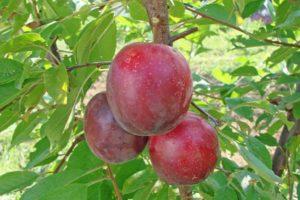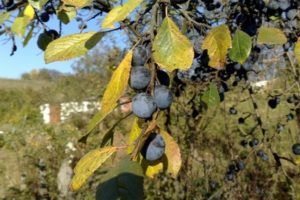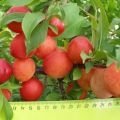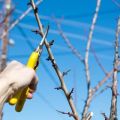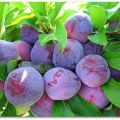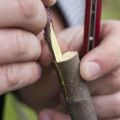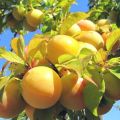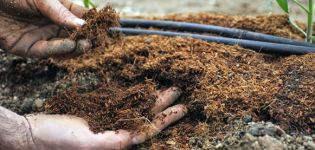Why plum leaves curl, what to do and how to process them
There are several reasons why plum leaves curl. What should gardeners do in order not to be left without a crop and not to destroy the tree? First of all, they are determined with characteristic symptoms and find out what this plant signal is associated with. A thorough examination and timely measures taken will help to avoid negative consequences.
What curling leaves look like
The appearance of curled plum leaves depends on the cause of the deformation. The leaf can not only roll up into a tube, but also wrinkle, and also change color, dry out and fall off. There are various reasons for this:
- Swirling leaves on a young tree indicate root damage.
- Yellowed and twisted foliage in the middle tier of an adult plum indicates a rise in the groundwater level or excessive watering.
- Green leaves rolled into a tube signal a lack of moisture in the soil.
- Curly leaves that form a cap on the top of the plum indicate an excess of nitrogen fertilizers.
- A deficiency in phosphorus, iron, potassium, or magnesium also causes the leaves of the tree to curl.
- When the processes of chlorophyll production are disturbed (chlorosis), foliage twisting is also observed.
- A fungal disease such as verticillosis also causes curling of the leaves of the plum.
- Leaves twisted into a tube often signal the negative impact of pests (plum aphid, elephant, leafworm, tick).
Why do plum leaves curl
Correct determination of the cause of the curling of the leaves at the plum will help you quickly navigate and take measures to eliminate it.
Plum pipe runner
This pest has another name - plum elephant. Outwardly, it looks like a weevil, only very microscopic. The female insect lays its eggs on all parts of the plant, including the leaves. The appeared larvae not only eat away part of the plate near the petiole, but also fold it into a tube. Over time, such a leaf dries up and falls off.
To combat the pipe-runner on plums, use the Lepidocide agent. You can use it a week before the expected harvest, in dry and warm weather. After a day, insects will suspend their activity, and in a week they will die. To combat pipe-runners on the drain, insecticides of a wide spectrum of action are also used (for example, "Fitoverm" or "Aktaru").

Butterfly leaf roll
An adult butterfly does not harm the plum, but this cannot be said about its offspring. Caterpillars are capable of destroying all green parts of a tree (from buds and leaves to buds and ovaries). They fold the leaf plate into a tube and pupate in them. If you shake the plum, the caterpillars will fall out and hang on a thin web. It is recommended to deal with them in the same ways as with a tube-runner.
Plum aphid
The danger of this pest is that it spreads very quickly. Up to 15 generations are reproduced during the growing season. It is difficult to deal with aphids even in the case when isolated cases of damage are found. The parasite settles not only on the outer, but also on the inner side of the plum leaf plate, folding it into a tube and making processing difficult. In habitats, a sooty fungus often settles, blocking the nutrition of the plant and clogging its pores.
Experienced gardeners recommend treating plums with Inta-Vir every spring for prevention purposes. Also, plants with a characteristic repelling smell are planted in the garden:
- coriander;
- marigold;
- chamomile;
- sage.
If the plum is already affected by aphids, then all the foliage is cut off and burned, and the tree itself is sprayed with insecticides containing karbofos ("Decis" or "Iskra").
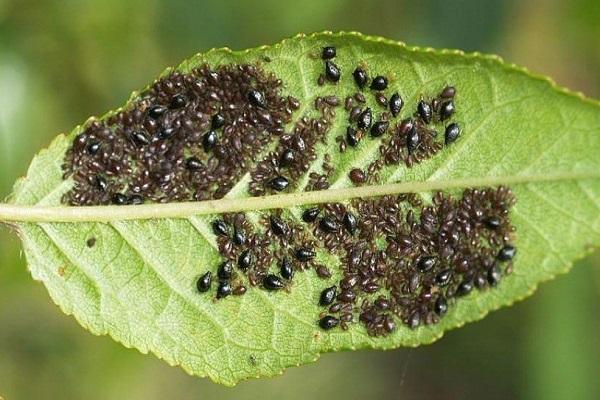
Unfavorable environmental conditions
The condition of plum leaves also depends on environmental factors. In particular, freezing leads to curling and wilting of the green mass. This phenomenon is typical for regions with a changeable climate, where spring return frosts or early autumn cold snap often occur. The tree should be protected with good shelter for the winter, otherwise it may die. This is especially true for young seedlings.
A common cause of plum leaf folding is excessive moisture or close groundwater. In this case, the green mass not only collapses, but also massively turns yellow. If such symptoms are found, watering the drain is stopped, and if necessary, the tree is transplanted to a hill.
Root damage
When transplanting or loosening the soil in the area of the trunk circle, damage to the root system occurs. If the plum leaves begin to curl for this reason, then it should be fed. In the spring, 20 g of carbamide is added to the soil.
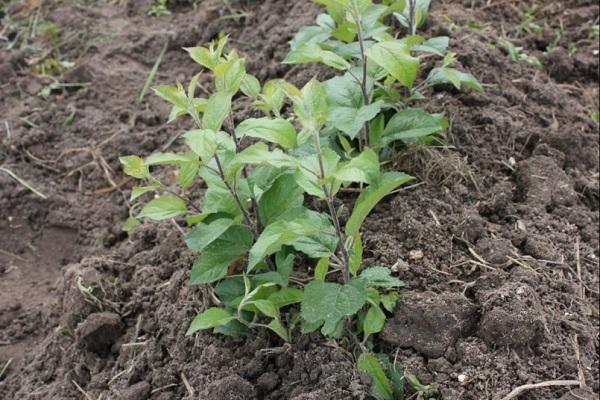
Deficiency or excess of nutrients
Inexperienced gardeners often make mistakes when feeding plums. With their excess or deficiency, the plant not only shrivels, but also turns yellow, and then leaves fall off. Lack of nitrogen affects not only the state of the green mass, but also the growth and development of the tree itself, its shoots. But as a result of its excess, the opposite is true: greens grow abundantly, and a cap of swirling leaves forms at the top. Flowering and fruiting are poor.
Phosphorus deficiency manifests itself in the curling of the edges of plum leaves closer to autumn. Fruits near the tree either crumble green or ripen tasteless. The foliage begins to fall off prematurely. If the plant lacks potassium, then it can become sterile. In this case, the leaf plates turn yellow at the edges and curl, then acquire a completely yellow color. Over time, they turn black, but do not fall off even with the onset of cold weather.
With a lack of magnesium and iron in the soil, the foliage on the plum turns yellow, curls to the bottom and wrinkles. Outwardly, this resembles signs of curliness in raspberries or gooseberries. If there is a deficiency of magnesium, then adult leaves are modified, and if the gland is deficient, young ones.
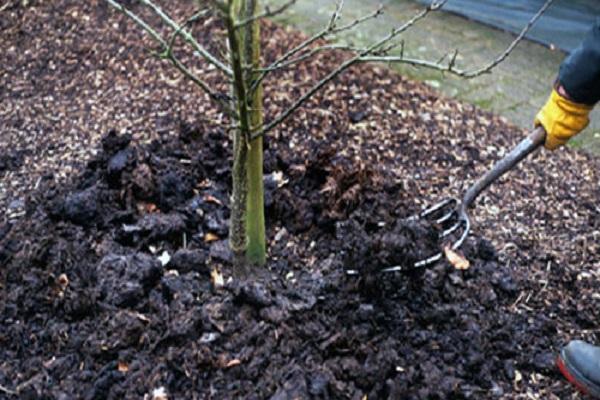
Chlorosis
This disease is a consequence of a violation of the production of chlorophyll in the plum. The foliage first acquires a yellow color, then brown, then curls up, a tube is formed, which turns black over time. Its edges begin to dry.Gradually, the disease spreads to young shoots, the upper leaves of the plum are already curled up.
The branches become very fragile and break easily. Carbonate soil contributes to the development of the disease. For the treatment of plums, the drug "Antichlorosin" is used, alternating with "Khilat". Treatments are appropriate throughout the growing season.
If you neglect the treatment and let the disease take its course, over time it can affect the entire garden.
Verticillosis
Spores of this fungus tolerate winter well directly in the soil. As soon as the warmth comes, they penetrate the roots through the formed cracks and wounds. The mycelium does not allow nutrients to move along the trunk, as a result, the foliage on the plum first turns yellow, then begins to twist upward and die off. At the initial stage of the lesion, the tree is treated with Topsin-M or Vitaros.
If the disease is neglected and the plum leaves curl on the tops, the question of how to treat it is no longer relevant. It is best to uproot the plant and burn it to prevent the infection from spreading further. For prevention, every spring and autumn, the plantings are sprayed with the drug "Previkur".

Coccomycosis
Every year this disease is becoming more common. It affects not only plums, but also other stone fruit plants, harming shoots, leaves, fruits and flowers. Small red dots on the foliage are the first signs of infection. Over time, they cover the entire plate, after which it is rolled up into a tube. When unfolding, small pale pink pads are clearly visible - traces of spores.
Favorable conditions for the spread of fungal diseases are high humidity and damp weather. If the disease is started, then the spores are clearly visible even on the wounds and cracks in the bark. The treatment with Bordeaux mixture (3 times per season) will help to save the plum. They spray not only the tree and its trunk, but also the soil in the near-trunk circle.
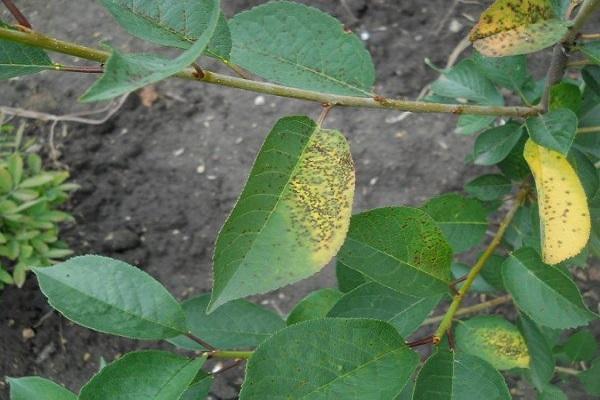
What to do
Timely preventive measures taken can avoid many problems and keep trees healthy. When the first signs of a disease are detected, measures must be taken immediately to treat the plant and eliminate the causes of the disease.
Fighting insects and diseases
Digging the soil in the trunk circle in late autumn helps to destroy the wintering plum pests and their larvae. Once on the surface of the earth in a cold winter, pathogens and pests die. With the onset of spring heat, insects eating the ovary actively accumulate on the branches. But to attract beneficial insects, it is recommended to plant honey plants near the plum.
The moth is caught on traps in the form of hanging cans with fermented compote or beer. In the spring, ticks emerging from shelters are destroyed by spraying with acaricides. Also, at this time of the year, it is necessary to clean the wood of old bark and whitewash it with a lime solution to get rid of overwintered larvae and pests.
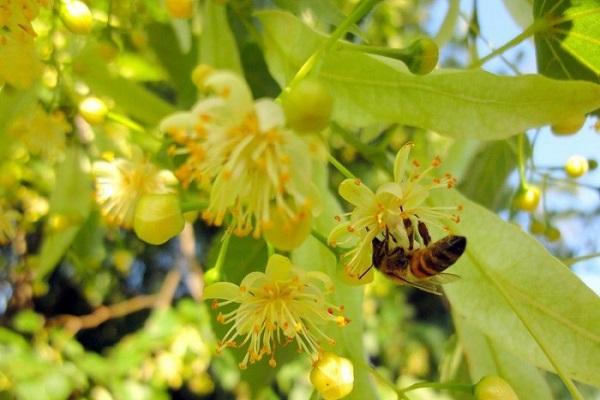
Rationing of tree feeding and proper care
In the first year of life, the plum does not require feeding at all. This is especially true for nitrogen fertilizers. If the plant is overfed, it will begin to build up the root system and young shoots by autumn, as a result of which it will not survive the winter. As for organic fertilizers, they are used no more than 3 times in the whole year.
Plum care is not only about regular watering and top dressing. The tree needs crown molding, weeds removal, loosening of the soil in the near-trunk circle, preventive treatments. In regions with cold climates, plants are prepared for winter, insulated and covered.

Maintenance work in the garden
When spring comes and dangerous insects fly out, it is recommended to spray the plum with an infusion with a pungent aroma (for example, conifers or wormwood).This will not kill the pests, but it will confuse them and force them to look for another place to stop.
Prevention of the appearance of aphids is carried out by treating the plum with ash and soap infusion. For its preparation, 1 kg of ash is taken per 10 liters of boiling water, the resulting mixture is infused for 2 days, after which 100 g of soap is thrown in and mixed well. This drug is sprayed on trees every 2 weeks.
To prevent the appearance of dangerous diseases in the garden, plums are treated with insecticides 3 times a season. The first time spraying is carried out before bud break, then before flowering and before the crop begins to sing. Autumn processing with Bordeaux mixture will help prevent the development of fungal diseases in the garden.
